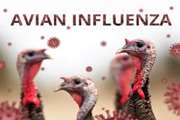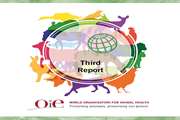Stepping up dog population management to achieve rabies elimination
According to the latest estimates, the global dog population exceeds 700 million individuals, of which 75% are roaming freely – meaning that they escape human supervision. Whether they belong to a household or a community, or assist farmers with livestock keeping, a large number of dogs can be found wandering outdoors. In many areas around the globe, dogs hold a special place: they are part of society. Even when they do not have an owner, dogs are frequently fed by people and children play with them, exposing themselves to potential bites. Nearly 99% of rabies cases in humans are attributed to dog bites and unfortunately, free-roaming dogs contribute to sustaining the presence of the disease in many countries. Rabies can be prevented if tackled at its main animal source: dogs. Vaccinating them is the most efficient way to eliminate the disease. Yet catching dogs, especially those who are prowling around inhabited areas, can prove quite challenging. Running dog population management alongside rabies control
IVO’s Office of Specialized Organizations and International Affairs:
The fifth Iran-Russia working group was held on Veterinary Issues
Dr Monique Éloit is re-elected as Director General of the World Organisation for Animal Health (OIE)
During her second term (June 2021-June 2026), Dr Éloit will provide leadership over the implementation of the 7th Strategic Plan, focused on global animal health governance.
Ebola disease in humans
Ebola disease in humans
Avian Influenza Portal
Avian Influenza Portal
New report shows global shift in use of antibiotics in animals
Figures released in a new report today by the World Organisation for Animal Health (OIE) show positive global progress on the regulation and monitoring of antimicrobial use in animals. The report aims to build the capacity of all countries to collect critical data on the use of antimicrobials in animals.
LAUNCH OF THE 2019 OIE PHOTO COMPETITION
LAUNCH OF THE 2019 OIE PHOTO COMPETITION
Animal Production Food Safety
Animal Production Food Safety













